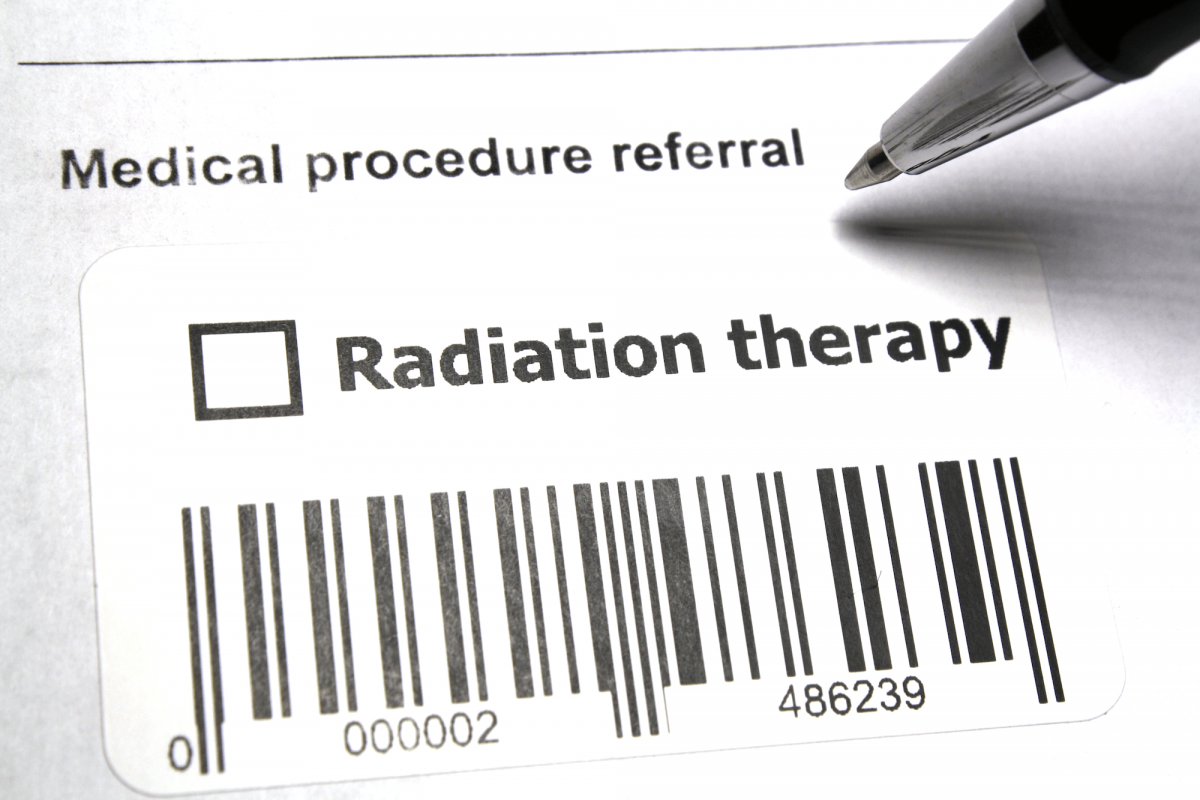When it comes to cancer treatments, there are three main types — surgery, chemotherapy, radiation — that doctors may prescribe alone or in combination. Each case is different. So if you’ve recently received a cancer diagnosis, your doctor will work with you to establish a unique treatment plan and decide how to move forward as quickly and effectively as possible.
One of the most commonly used treatments is radiation therapy. If this is part of your journey to recovery, here’s everything to expect as you begin radiation treatments.
Why Radiation Therapy?
Radiation therapy is popular as an effective method to help eliminate cancer cells. In high doses, radiation works by killing cancer cells or slowing their growth by damaging their DNA. Once their DNA is damaged, the cells will stop dividing and die. And finally, once the damaged cells die, they are broken down and removed by the body.
But many people don’t realize that this doesn’t occur immediately. This process can take weeks or even months before the DNA in the cancer cells becomes damaged enough to die. Moreover, cancerous cells can continue dying for weeks after radiation therapy ends.
What Are the Types of Radiation Therapy?
There are two main types of radiation therapy: external beam and internal therapy. Your doctor will consider several factors when deciding which type is best, including the type and stage of your cancer, the size and location of the tumor, your age, your general health, and your medical history. With these factors in mind, they will make a recommendation for external beam or internal radiation therapy.
What Is External Beam Radiation Therapy?
External beam radiation is a local treatment that targets a specific part of your body. This type of radiation therapy comes from a machine that aims radiation directly at your cancer from outside your body.
What Is Internal Radiation Therapy?
Internal radiation therapy involves implanting a radiation source directly inside your body, either through brachytherapy or systemic therapy.
Brachytherapy
When the radiation source is solid, internal radiation treatment is referred to as brachytherapy. In this case, seeds, ribbons, or capsules containing a radiation source are placed into your body near or in the tumor. Because these implants are very localized, brachytherapy treats only a specific part of your body.
Systemic Therapy
When internal radiation therapy uses a liquid source, it is called systemic therapy. In systemic therapy, the treatment travels through your blood to tissues throughout your body, seeking out and killing cancer cells. Typically, you receive the radiation through an IV in your vein, an injection, or by swallowing. Your bodily fluids, including sweat, saliva, and urine, will continue to give off radiation for a while after completing treatment.
Can You Use Radiation Therapy as Palliative Treatment?
Radiation therapy is generally prescribed to treat cancer, cure cancer, stop or slow its growth, and prevent it from returning. But patients can also use radiation to ease symptoms if the tumor is aggressive or untreatable. These are referred to as palliative treatments.
For example, external beam radiation can shrink tumors to treat pain or reduce other problems that tumors might be causing, such as trouble breathing or loss of bladder control. Or, if cancer has spread to the bones, systemic radiation therapy drugs called radiopharmaceuticals can be used to alleviate some pain.
How Is Radiation Used with Other Cancer Treatments?
For some patients, radiation may be all that is needed for successful treatment. But, more times than not, radiation therapy is used in conjunction with other treatments, such as chemotherapy or surgery. Radiation may be given before, during, or after the other therapies to improve the chances of a favorable outcome.
For example, when combined with surgery, radiation can be given to the patient:
- BEFORE surgery to shrink the tumor size, making it more easily removed and less likely to return.
- DURING surgery to go straight to the tumor without passing through the skin. In this way, doctors can protect nearby healthy tissues from any radiation damage or side effects.
- AFTER surgery to continue to kill any remaining cancer cells that haven’t been removed.
What Happens Before Starting Radiation Therapy?
While every treatment plan is created to meet the individual needs of each patient, here are some general steps you can expect before beginning radiation:
- You will meet with the doctor to review your medical records, undergo a physical exam, and complete any recommended tests. They will also go over the potential risks and benefits of this therapy and answer any questions you may have.
- You will sign a consent form to give your permission for radiation therapy.
What Happens at Your First Treatment?
After your initial meeting, you will go for your first treatment, which will often be a preparatory simulation. During this simulation, your team will run through everything as if it is an actual radiation appointment. The doctor or technician will measure your body and mark your skin, so you receive treatment in the exact location every time. Precision is very important, so you will also be arranged on the machine in the same position that you will be in during your actual treatments.
Your radiation team may also fit you for immobilization devices such as molds, tape, foam sponges, or headrests. These devices will help you remain in the same position throughout the weeks and months while receiving radiation.
After the simulation is complete, your radiation team will typically review your information, develop a treatment plan and meet with you again before starting radiation therapy.
What Happens After the Simulation?
Once treatment plans are in place, you have signed all your documents, and the simulation is complete, your radiation therapy will begin.
External Beam Radiation Therapy Appointments
If your radiation plan includes external beam therapy, you’ll attend short, near-daily appointments. Each session lasts around 15 minutes, typically having five sessions a week for three to nine weeks.
Most people report feeling no pain while receiving treatment, but some patients may feel discomfort and skin changes over time. Fortunately, these tend to go away after radiation is complete.
Internal Radiation Therapy Appointments
If your radiation plan relies on internal therapy, your treatments may require a brief hospital stay and anesthesia to block the pain while the radioactive sources are implanted. Since the radiation source is carried within your body, doctors will also provide you with precautionary measures to protect people around you from radiation exposure. But once treatment ends and the temporary implant is removed, these precautions will no longer be necessary.
How Should You Care For Yourself During Radiation Therapy?
During radiation therapy, your body will need a little extra care and support. Some recommended tips include:
- Get plenty of rest
- Eat a balanced and nutritious diet
- Stay hydrated
- Clean your skin daily
- Avoid using any lotions, perfumes, or deodorants
- Stay out of the sun
What Are Some Side Effects of Radiation Therapy?
Early side effects of radiation can occur during or right after treatment. These tend to be short-term, mild, and treatable, and usually dissipate a few weeks after treatment ends. The most common ones are fatigue and skin changes.
Some late side effects can take months or even years to fully develop and typically occur within normal tissue that received radiation during your therapy. Careful planning with your treatment team can help you to avoid any serious long-term effects.
Aynjil Insurance
At Aynjil, we have been personally affected by cancer and the subsequent treatments. But over the course of these experiences, we saw that the average health insurance does not cover the full needs of a cancer patient.
At Aynjil, we understand that cancer treatment costs go far beyond diagnosis and treatment. We have designed our product with your lifestyle needs, emotional care, and overall well-being in mind. Designed to work in conjunction with your primary health insurance, our unique and specified cancer insurance has no fine print, no ambiguous clauses, and is economically priced.
Visit our website to view our product and sign up with an easy, 4-minute online process.
Marketing by Joseph Studios



